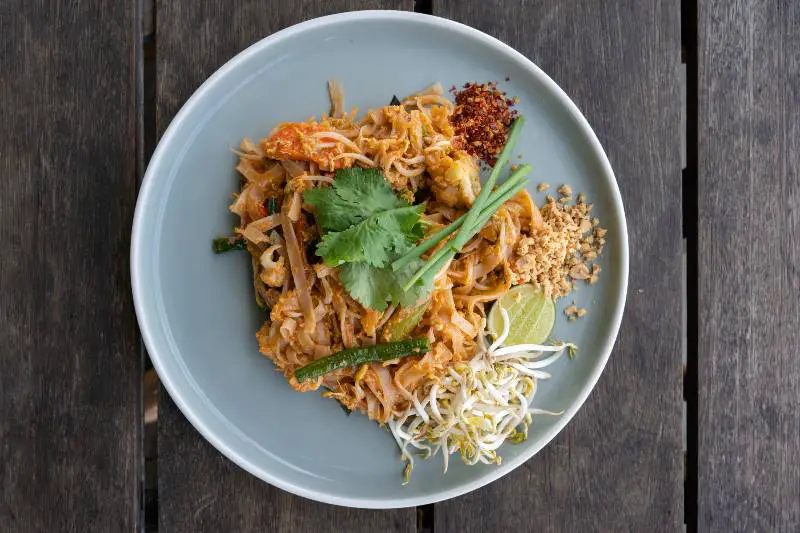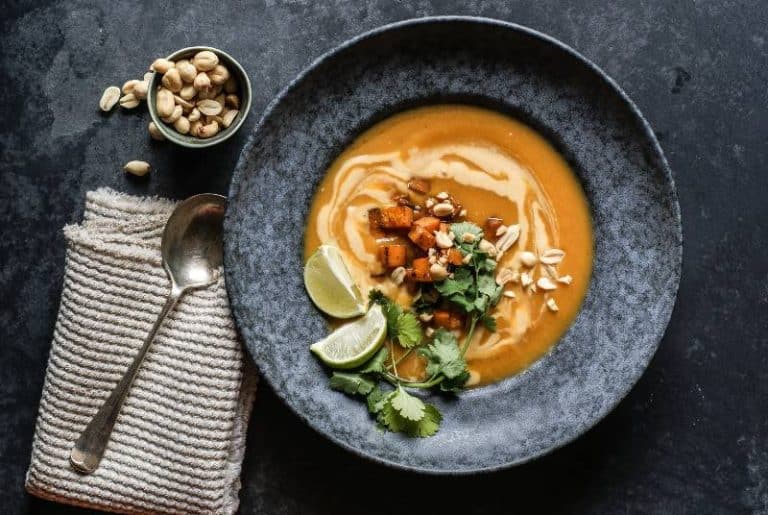Beyond Pad Thai: Exploring Unconventional Thai Dishes You Must Try
Are you looking to expand your culinary experience with something unconventional and unique? If so, you should consider trying some of Thailand’s most popular dishes! From street food snacks to traditional meals that have been served in the country for centuries, there is a delicious variety of flavors and ingredients that everyone can enjoy. Not only will these Thai dishes tantalize your taste buds – but they also provide an excellent opportunity to experiment with sustainable cooking practices! Read on to learn more about our favorite unconventional Thai dishes and why they’re worth trying.
Thai cuisine is loved for its delicious flavors that come from unique combinations of many different ingredients. These include fresh vegetables, bold spices, savory flavors like peanuts, and sweet flavors like coconut.
Key Takeaways
- Thailand’s culinary tradition reflects its rich cultural heritage. By exploring unconventional Thai dishes, we get a broader understanding of the country’s regional diversity and innovation in the kitchen, which often goes unnoticed in popular global Thai menus.
- Unconventional Thai dishes offer unique flavors that challenge and expand the palate. These dishes often include locally sourced ingredients, giving them an authentic taste that’s distinct from common Thai dishes known worldwide.
- While some of these dishes can be challenging to find outside of Thailand, they can be cooked at home with the right ingredients and guidance, offering a more intimate connection to Thai culture. Plus, those who have the chance to visit Thailand are encouraged to explore local food stalls and restaurants.

The Role of Unconventional Dishes in Thai Cuisine
Exploring cultural significance
When it comes to Thai cuisine, people often gravitate towards well-known dishes like Pad Thai, Green Curry, or Tom Yum Soup, which have undoubtedly become global ambassadors of this rich culinary heritage. However, there’s a more profound depth and breadth to Thai cuisine, brimming with less-explored, unconventional dishes that can provide an astonishingly different perspective on the country’s food culture. These uncommon dishes, layered with flavors, textures, and stories, reflect the creativity and diversity intrinsic to Thailand’s gastronomic landscape.
One of these unconventional delights is Khao Soi, a curry-based noodle soup hailing from Northern Thailand. This Burmese-inspired dish is a testament to the region’s cultural intermingling, blending the robustness of a curry with the comfort of a noodle soup. Thick egg noodles are topped with a rich coconut-based curry, garnished with pickled mustard greens, shallots, lime, and deep-fried crispy noodles. This unusual blend offers an intriguing mix of textures and flavors, from the crunchiness of the crispy noodles to the tanginess of the pickled greens, delivering a delightful culinary journey through every spoonful.
On the southern end of the Thai culinary spectrum is the fiery Gaeng Tai Pla. This southern Thai curry is emblematic of the region’s affinity for intense, bold flavors. It’s a fish innards curry packed with fermented fish entrails, bamboo shoots, eggplant, yardlong beans, and a range of local spices. The dish may seem intimidating for the uninitiated due to its strong flavor profile, but it encapsulates the spirit of southern Thai cuisine and demonstrates how culinary practices can turn seemingly humble ingredients into a flavor-packed feast.
Exploring the less-traveled path of Thai cuisine leads us to Koi Khai Mod Daeng, a dish predominantly found in the Isan region. A delicacy that challenges conventional food norms, this salad is made from red ant eggs. These eggs are mixed with shallots, lime juice, fish sauce, and fresh herbs to create a salad that delivers an unexpected crunch, a mild tang, and a unique blend of flavors. This dish, while unconventional, tells a story about the region’s resourcefulness and its ingenious utilization of locally available ingredients.
Influence on the National and regional palate
These unconventional dishes aren’t just an exploration of taste, but also a deep dive into the heart of Thailand’s culture and tradition. Each dish is an edible tapestry woven with threads of historical influences, regional biodiversity, and cultural practices.
For example, Khao Soi’s history traces back to the trade routes between China and Thailand, showcasing a marriage of influences between these regions. The melding of curry and noodle soup reflects the interconnectedness of various cultures along these trade routes. Gaeng Tai Pla, with its fermented fish and intense spices, mirrors the region’s fishing culture and the need for preservation methods in an era without refrigeration. Koi Khai Mod Daeng displays the Isan region’s resourcefulness, with ants’ eggs harvested during the rainy season, an illustration of how humans adapt their cuisine to nature’s calendar.
Influence on the National and Regional Palate
While these dishes may be unconventional, their influence on the national and regional palate is undeniable. They provide a panoramic view of Thailand’s culinary diversity, revealing the nation’s spectrum of flavors.
The hearty, curry-filled Khao Soi is a delightful contrast to the more light and zesty dishes commonly found in central Thailand, embodying the more robust and hearty fare of the north. Gaeng Tai Pla’s bold, intense flavors push the limits of the Thai flavor spectrum, showcasing the southern region’s love for heat and complexity. On the other hand, Koi Khai Mod Daeng introduces an entirely unique flavor and texture experience, broadening the scope of Thai cuisine beyond the commonly perceived norms.
These unconventional dishes not only enrich the Thai culinary repertoire but also provide intriguing insights into the country’s diverse regions, history, and cultural practices. They are a testament to the creativity and resourcefulness inherent in Thai cuisine, daring us to expand our understanding and experience of this rich and varied gastronomic tradition. So, the next time you have the opportunity to delve into Thai cuisine, remember to venture beyond the familiar favorites and let these unconventional dishes take you on a journey of discovery.
13 Unconventional Thai Dishes
- Khao Soi – As mentioned earlier, this curry-based noodle soup originates from Northern Thailand. Khao Soi reflects the region’s ties with neighboring cultures. It consists of wheat-and-egg noodles, served in a rich coconut curry broth, often with chicken or beef. The dish is garnished with crispy noodles, pickled mustard greens, lime, and shallots. Preparation involves simmering the meat in a curry paste (made from ingredients like red chilies, turmeric, ginger, and shrimp paste), coconut milk, and broth until tender. Cooked noodles are then added, and the dish is served hot, topped with an array of garnishes for added flavor and texture.
- Gaeng Tai Pla – A fiery dish from Southern Thailand, Gaeng Tai Pla is a fish innards curry known for its robust flavors. It includes fermented fish entrails, bamboo shoots, eggplant, and yardlong beans. These ingredients are simmered together in a blend of curry paste (a mixture of dried chilies, lemongrass, garlic, shallots, and shrimp paste), giving the dish its intense flavor and heat. It’s a testament to the region’s fishing culture and the historical need for preservation techniques.
- Koi Khai Mod Daeng – This unusual dish from the Isan region is a salad made from red ant eggs. It’s mixed with shallots, lime juice, fish sauce, and fresh herbs, resulting in a unique texture and flavor. Preparation involves simply mixing the ant eggs with the other ingredients, highlighting the simplicity and resourcefulness of Isan cuisine.
- Yam Makheua Yao – This dish is a grilled eggplant salad, often eaten in northeastern Thailand. It involves grilling eggplants until charred and soft, then peeling and mashing them. The eggplant is then mixed with chilies, garlic, palm sugar, fish sauce, and lime juice, and topped with coriander, culminating in a smoky, tangy, and mildly sweet dish.
- Kaeng Khiao Wan Kai – Known as the Green Chicken Curry, this dish is a Thai staple, yet still unconventional to the unacquainted. It’s a blend of chicken, Thai eggplant, and aromatic herbs in a creamy, spicy, and sweet green curry. The green color comes from green chilies used in the curry paste, combined with coconut milk, palm sugar, and fish sauce. The dish often includes Thai basil for an aromatic finish.
- Sai Ua – A signature dish from Northern Thailand, Sai Ua is a spicy and aromatic sausage. It’s made from minced pork mixed with a paste of lemongrass, kaffir lime leaves, chilies, garlic, shallots, and a variety of local spices. The mixture is stuffed into a sausage casing and then grilled. This dish encapsulates the region’s love for robust, herbaceous flavors.
- Pla Ra – An essential ingredient in many Northeastern Thai dishes, Pla Ra is a fermented fish condiment. It’s prepared by fermenting a mix of fish, roasted rice powder, and salt in a jar for several months. It has a distinctive, strong aroma and is used to add depth of flavor to salads, dips, and soups.
- Goong Chae Nam Pla – A raw shrimp salad that exemplifies Thailand’s daring culinary traditions. Fresh, high-quality shrimp are doused in a mixture of fish sauce, lime juice, garlic, and chilies. The acidic mixture slightly “cooks” the shrimp, similar to ceviche, and the dish is often topped with fresh herbs for a refreshing finish.
- Khanom Jeen Namya – A dish hailing from Southern Thailand, Khanom Jeen Namya is a rice noodle dish served with a spicy fish curry sauce. The sauce is made with fish, chilies, lemongrass, turmeric, galangal, and coconut milk, providing a rich and spicy companion to the soft, mild rice noodles.
- Khao Mok Gai – Also known as Thai Chicken Biryani, this dish shows the Indian influences in Thai cuisine. It involves cooking chicken with rice, turmeric, and a blend of spices, resulting in a fragrant and flavorful one-pot dish. The chicken is often marinated in a mixture of spices before being cooked with the rice, infusing every grain with flavor.
- Mango Sticky Rice – Mango sticky rice, a delectable and beloved traditional dessert originating from Southeast Asian and South Asian cuisines, is a tantalizing combination of sticky glutinous rice, luscious fresh mango slices, and creamy coconut milk. This divine treat is typically savored by using a spoon or indulging with the hands, allowing the delightful flavors to blend harmoniously with each bite.
- Spicy Green Papaya Salad – This salad deviates significantly from typical Western salads, forgoing ingredients like mayo and oil in the dressing. It’s a delightful and invigorating cold salad featuring green papaya, a fruit that might be unfamiliar to most Western palates. Green papaya, simply unripened papaya, offers a juicy and slightly crunchy texture with a neutral taste. When shredded, it becomes an excellent canvas for capturing the myriad flavors of the dressing: the sweetness of palm sugar, the savory saltiness of fish sauce and dried shrimp, the fresh tang of lime, and the fiery pungency of generous amounts of garlic and chili.
- Gaeng Kiao Waan – Gaeng khiao waan gai, also known as green curry with chicken, is one of the tantalizing Thai curries that has gained worldwide recognition for its exquisite blend of flavors. Made with a luscious green curry paste, succulent pieces of chicken, and a medley of aromatic herbs and spices, this dish offers a harmonious balance of heat, sweetness, and creaminess. Served alongside fragrant jasmine rice or steamed noodles, it is a culinary delight that will transport your taste buds to the vibrant streets of Thailand.
Get ready to embark on a captivating culinary journey through Thailand! These unconventional dishes are much more than just food; they are vibrant representations of regions, communities, and fascinating cultural practices. From ingredients that celebrate the country’s biodiversity to preparation methods steeped in history and tradition, each bite offers a tantalizing exploration of Thailand’s diverse cultural tapestry. So, gather your courage and brace your taste buds for an enriching, eye-opening experience of Thai cuisine like never before!
Where to Find These Dishes
While it would be a privilege to savor these unconventional Thai dishes in their birthplaces, you can also find them in select culinary establishments within and outside Thailand. Here are some recommendations:
In Thailand
- Khao Soi – You should definitely try Khao Soi Mae Sai in Chiang Mai. It’s a renowned dining spot that attracts both locals and tourists with its exceptional Khao Soi. This traditional Thai dish features a rich and fragrant curry broth, tender chicken or beef, and a generous topping of crispy noodles. The combination of flavors and textures is simply divine, making it a must-visit for anyone looking to indulge in the vibrant culinary scene of Chiang Mai.
- Gaeng Tai Pla – If you’re in Surat Thani and craving mouthwatering Southern Thai cuisine, look no further than Krua Luang Then This hidden gem offers a wide range of delectable dishes, but make sure not to miss out on their outstanding Gaeng Tai Pla. Prepared with authentic flavors and spices, this dish will transport your taste buds to the vibrant streets of Southern Thailand. Don’t miss the chance to indulge in the culinary delights Krua Luang Then 2 has to offer!
- Koi Khai Mod Daeng -Located in the vibrant city of Nakhon Ratchasima, Jaew Horn Coffee House, and Restaurant is a delightful culinary haven that elevates the concept of this unique dish to new heights. With its inviting ambiance, attentive service, and an array of mouthwatering flavors, it offers a truly exceptional dining experience that is sure to tantalize the taste buds of food enthusiasts. Whether you’re a local resident or a curious visitor, a visit to Jaew Horn Coffee House and Restaurant is a must to savor their delectable version of this renowned dish.
- Yam Makheua Yao – Isan, the charming northeastern region, beckons adventure-seeking foodies to indulge in its culinary delights. A must-visit destination on this gastronomic journey is Tam Suea in Khon Kaen, renowned for its delectable rendition of the grilled eggplant salad. Prepare to have your taste buds enticed!
- Kaeng Khiao Wan Kai -For an exquisite experience of this delectable dish, head to Mae Varee in Bangkok. Renowned for its aromatic and mouthwatering green curry, it is truly a culinary delight that must not be missed.
- Sai Ua -Indulge your taste buds with the unique local sausage by visiting Mae Hia Fresh Market in Chiang Mai. Savor this delightful delicacy served by authentic vendors and experience the true essence of the region.
- Pla Ra – A typical ingredient in many dishes in the Northeast, it’s commonly available in local markets. However, be sure to ask locals for the best spots to ensure quality.
- Goong Chae Nam Pla – Visit the seafood-centric province of Samut Sakhon and try this dish at the well-regarded Ruan Thip restaurant.
- Khanom Jeen Namya – Mee Ton Poe in Phuket is a cherished destination renowned for serving the exquisite delicacy known as Khanom Jeen Namya. It has gained a well-deserved reputation for its exceptional culinary offerings that entice food enthusiasts from far and wide.
- Khao Mok Gai – Check out Aisa Rot Dee in Bangkok’s bustling Yaowarat (Chinatown) area, famed for its Thai Chicken Biryani.
Outside Thailand
If you are looking for these dishes outside of Thailand, it might be a bit more challenging due to the unique regional ingredients. However, with the rise in popularity of Thai cuisine worldwide, it’s certainly not impossible.
- Thai Restaurants – Look for specialized Thai restaurants, particularly those which advertise regional cuisine. You may not find all dishes in all places, but some like Khao Soi, Kaeng Khiao Wan Kai, and Khao Mok Gai are becoming more common.
- Thai Food Festivals – These are great places to find less common dishes. Chefs at these festivals often enjoy showcasing the depth and breadth of Thai cuisine beyond the usual offerings.
- Online – Some businesses ship Thai ingredients internationally, allowing you to try your hand at preparing these dishes yourself. Websites like ImportFood offer a wide range of Thai ingredients.
Remember that food experiences can vary widely based on the chef, the quality of ingredients, and even the day. It’s always a good idea to check recent reviews and perhaps even get local recommendations when possible. However, the pursuit of these unique dishes, whether in Thailand or abroad, is sure to be an adventure of culinary discovery.
Cooking Unconventional Thai Dishes at Home
Cooking unconventional Thai dishes at home can be an exciting culinary adventure, offering a unique way to explore Thai cuisine. Below are some suggestions and tips:
Suggested Recipes
- Khao Soi: Start with making the curry paste from dried red chilies, shallots, garlic, lemongrass, galangal, turmeric, and shrimp paste. Simmer your choice of meat (typically chicken or beef) in a mixture of this paste, coconut milk, and broth until tender. Cook egg noodles separately and add them to the soup. Garnish with pickled mustard greens, lime, shallots, and deep-fried noodles.
- Yam Makheua Yao: Grill eggplants until their skin is charred, then peel and mash them. Combine with a dressing made of fish sauce, palm sugar, lime juice, crushed garlic, and chilies. Top with fresh coriander before serving.
- Kaeng Khiao Wan Kai: Make a green curry paste from green chilies, lemongrass, galangal, garlic, shallots, and shrimp paste. Simmer chicken pieces, Thai eggplants, and the paste in coconut milk until cooked. Season with fish sauce and palm sugar, and add Thai basil leaves for an aromatic finish.
- Khanom Jeen Namya: Cook a spicy fish curry by simmering fish in a blend of chilies, lemongrass, turmeric, galangal, and coconut milk. Serve this curry sauce over freshly cooked rice noodles.
- Khao Mok Gai: Marinate chicken in a mixture of turmeric, coriander, cumin, and other spices, then cook it with jasmine rice, more spices, and chicken broth until tender. Often served with a spicy, sweet, and sour sauce on the side.
Cooking Tips
- Freshness is Key: Thai cuisine relies heavily on the freshness of ingredients. Fresh herbs and spices bring out the vibrant flavors that Thai food is known for.
- Balance of Flavors: Thai food is all about the balance between sweet, sour, salty, and spicy. Taste as you cook and adjust the seasonings accordingly to achieve this harmony.
- Mortar and Pestle: Many Thai dishes require making a paste from various spices and herbs. While a food processor can do the job, a traditional mortar and pestle is preferred for its ability to draw out the full aroma and flavor of the ingredients.
- Proper Prep: Thai cooking involves several ingredients and can be complex, so preparing and organizing all your ingredients beforehand can make the process smoother.
- Experiment and Adjust: Feel free to experiment and adjust recipes based on your preference and the ingredients available to you. Authenticity is important, but so is making a dish that you’ll enjoy.
With patience, practice, and a spirit of adventure, cooking these unconventional Thai dishes at home can be a rewarding way to deepen your understanding and appreciation of Thai cuisine. Happy cooking!

Unconventional Thai Dishes You Must Try FAQs
Are the ingredients for these dishes readily available?
Yes, the ingredients for these dishes are readily available. However, depending on where you are in Thailand or abroad, some of the regional ingredients may be harder to find.
Are there vegetarian or vegan options for these dishes?
Yes, many of these dishes can be adapted to be vegetarian or vegan. For example, Khao Soi and Khanom Jeen Namya can both easily be made with tofu or vegetables instead of meat. Similarly, some of the curry pastes may have to be adjusted for vegan diets.
What is the cultural significance of these dishes in Thailand?
These dishes are closely tied to the regions they come from and have been enjoyed for centuries. They are often served on special occasions or used to celebrate local festivals. For example, Khao Soi is commonly eaten in Chiang Mai during the Loi Krathong festival. Furthermore, many of these dishes were historically reserved only for royalty due to their complexity and delicate nature.
Are these dishes spicy?
The spice level can vary greatly depending on the dish. For instance, Khao Mok Gai is usually mildly spiced while dishes like Yam Makheua Yao are often quite spicy. It’s always best to check reviews and get local recommendations when possible.
How do these dishes differ from more well-known Thai dishes?
These dishes differ from more widely known Thai dishes in that they are generally less well-known and often have a strong regional influence. The ingredients, spices, and cooking techniques vary greatly from dish to dish and can offer new and exciting flavors for those looking to explore the diversity of Thai cuisine.
Conclusion
From the fiery heat of the traditional Northeastern-style larb to the red sweetness of Kanom tong ting, it is with great pleasure that I invite you to join me in exploring all that Thailand has to offer in terms of its unique cuisine. When paired with a nice Chang or Singha beer, Thailand’s diverse array of flavors truly becomes something special for locals and tourists alike. As such, take your time when visiting and make sure to sample as many dishes as possible from Thai street food vendors, local restaurants, and family home kitchens. Not only will you discover fresh flavors you would have never tasted before but also get a greater understanding of this ever-changing country and its culture.
So don’t wait any longer, choose one dish now that looks interesting and dive into a magnificent world of exotic aromas and unforgettable tastes! And if you’re looking for more information about living in Thailand or other great culinary destinations around Asia, be sure to subscribe to our newsletter!






